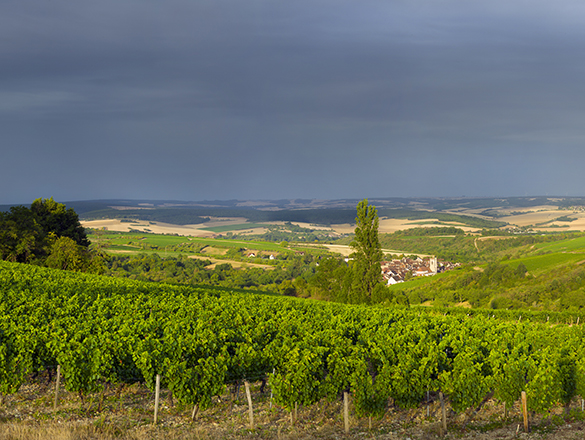

The vineyards of Bourgogne produce some great wines with a historical and international reputation. However, the region is not simply limited to its iconic appellations. In addition to its Village Premier Cru and Grand Cru AOCs, it also produces a range of wonderful Régionale and Village appellations to explore.
You will also find a full list of the Bourgogne’s Climats and lieux-dits on this page.
Check out the complete list of the 84 Bourgogne appellations.
However, your exploration has only just begun. Bourgogne wines have never before offered such high quality. Besides our range of internationally celebrated wines, try some of our lesser-known appellations where there are lots of surprises in store.
And for a fun way to find out more about the wines on offer, try out our “Which Bourgogne wine is right for me?” quiz, or check out Bourgogne Maps to take an interactive tour of the region.
Village appellation
VIGNOBLES DE CHABLIS ET DU GRAND AUXERROIS
26 février 1999
Reds only - Pinot Noir and César.
The César grape, of which there are some 5 hectares in the Irancy appellation, is said to have been brought here by the Roman legions. It is a vigorous variety which produces largish bunches of spherical blackberries. On its own (unblended) it yields a highly colored wine with red-fruit aromas and rich tannins.
Area under production*:
1 hectare (ha) = 10,000 m2 = 24 ouvrées.
190.52 ha.
* in 2018
Appellation Village of the Auxerrois wine-growing region (Yonne).
On the label, the name of the Climat from which the wine comes may appear immediately beneath the word IRANCY in letters no larger than half the size.
Producing communes: Irancy, Cravant, Vincelottes.

This is a red wine made from Pinot Noir grapes. An unusual feature is that it may, if desired, include in its composition up to 10% of César, a traditional grape of this region. Rich in tannins, lively in colour, the César is a noble grape which lends the wine an interesting personality. Minor differences are observable according to whether a given cuvée is made with Pinot Noir only or includes an element of César. The strong crimson colour of this wine, shading towards dark red, is rich in highlights. The bouquet is bursting with fruit aromas (blackcurrant, Morello cherry, raspberry, blackberry) with sometimes floral, liquorices or pepper notes. On the palate, the tannins melt into a firm and velvety structure. Its acidity is sufficient to ensure excellent keeping qualities (3-10 years).

Red: solid yet charming, Irancy cries out for dishes with strong, meaty flavors. Spare ribs and other barbecued meats will find it an enthusiastic partner because it combines virile tannins with real aromatic power.
Casseroles, of poultry for example, are another worthy match. And it goes without saying that cold cuts and pâtés, faggots and terrines find in Irancy a boon companion, its tannins balance the unctuousness of dishes like these.
The cheese board could include Camembert, Coulommiers, Brie de Meaux, Cantal, Chaource, Langres, Époisses, Soumaintrain…
Serving temperature: 15 to 18 °C.

Irancy, in the Grand Auxerrois region, stands on the right bank of the Yonne river, some fifteen kilometres South of Auxerre and South-West of Chablis. It is typical of the wine-growing villages of the district. It boasts a majestic church, as well as the house where G. Soufflot, architect of the Paris Panthéon, was born. The handsome winemaker’s houses make a fitting setting for a red wine with such a long-established reputation. It was raised to the status of an appellation Village, which it shares with the neighboring villages of Cravant and Vincelottes, in 1999.

The hillslopes hereabouts form a bowl surrounding the beginnings of a plateau below which runs the river Yonne. The slopes are for the most part composed of Kimmeridgian marls with an admixture of brown limestone soils and here the Pinot Noir grape flourishes at altitudes of 130-250 metres. Exposures vary, mostly southerly or South-westerly. Some terroirs have long been recognized as being of unusual merit.
